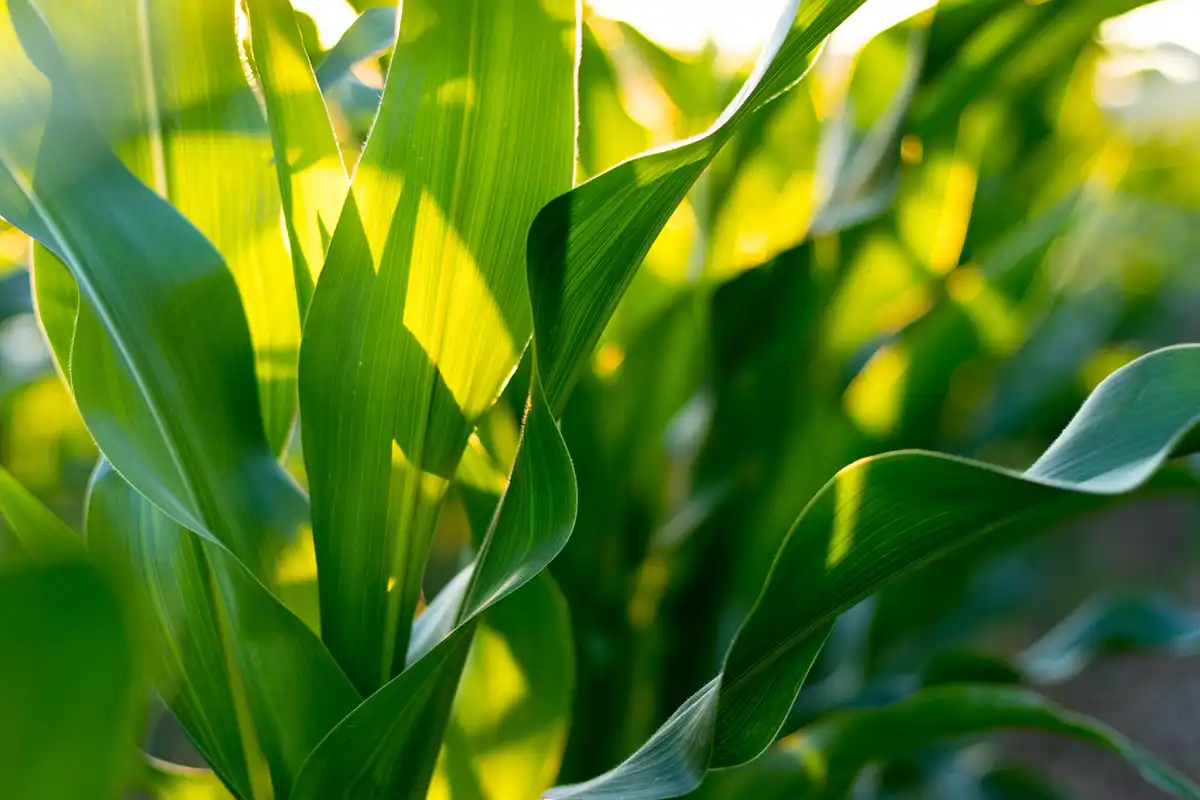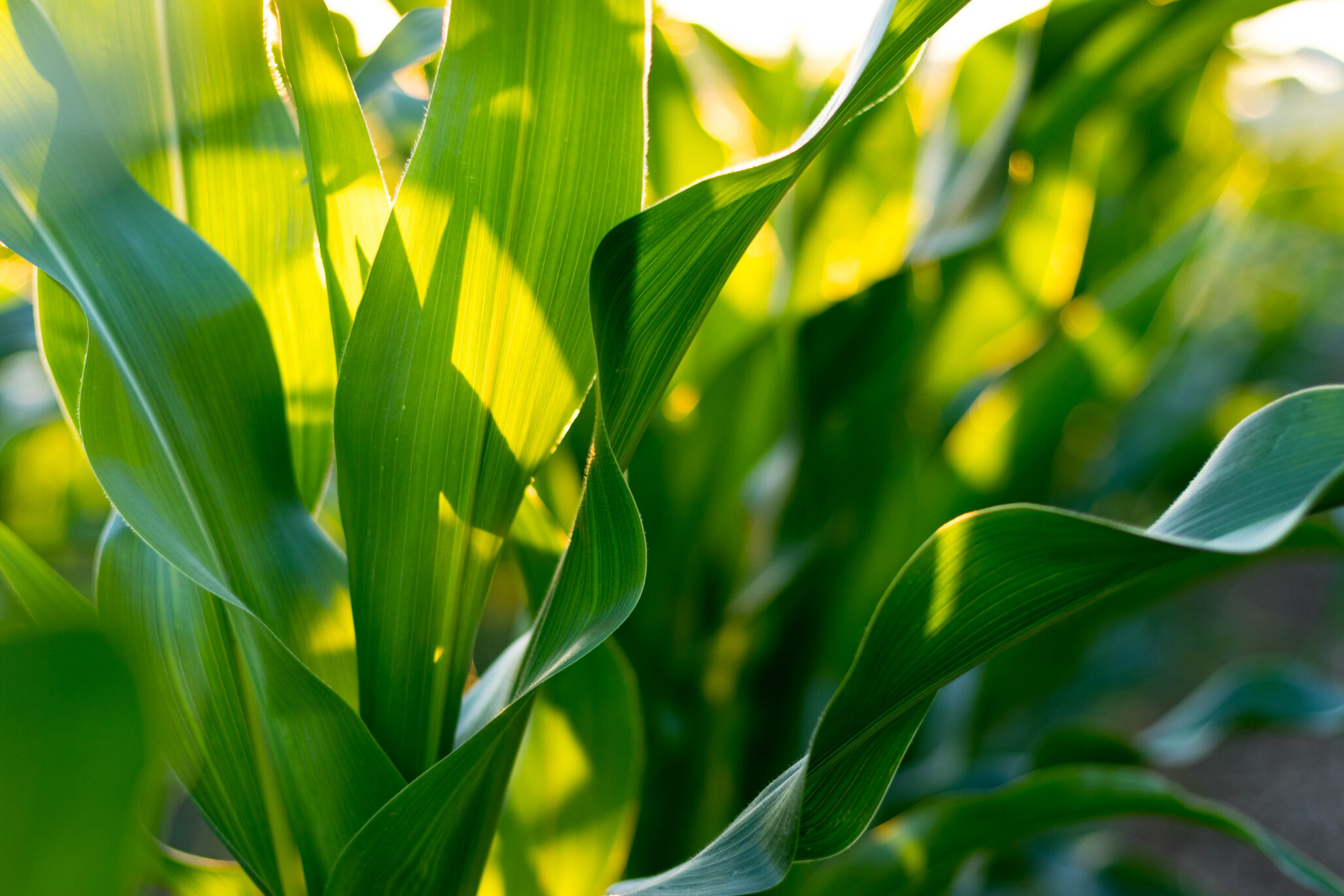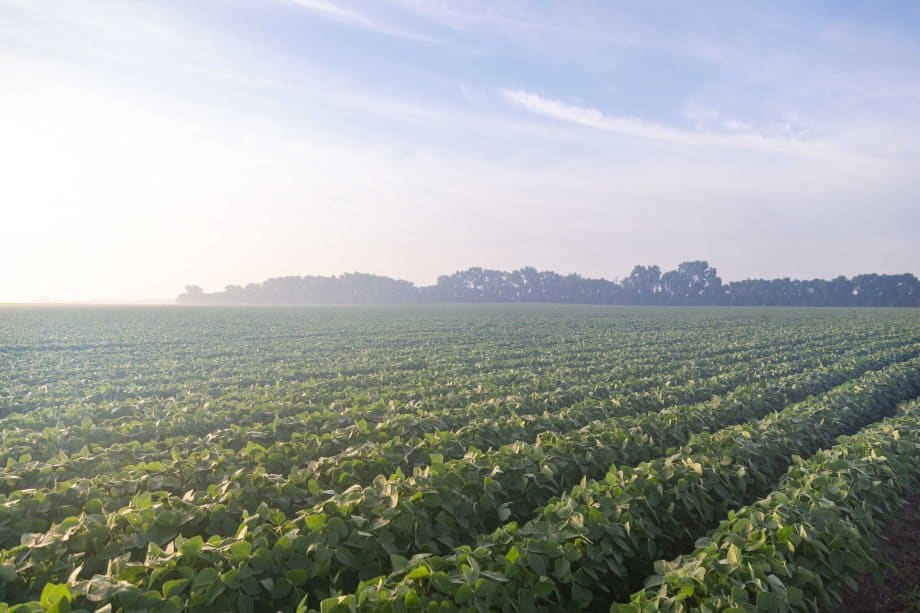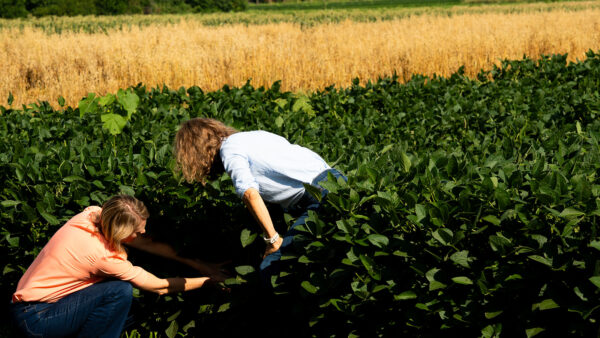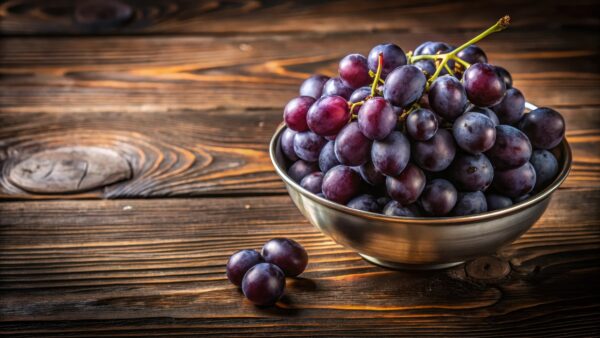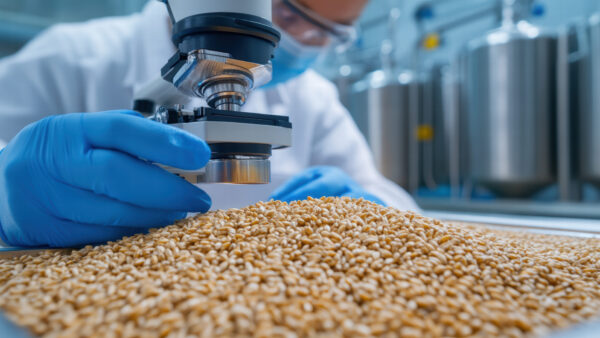No matter a seed’s genetics, nitrogen fertilizer is critical for achieving high yields, especially in corn.
“Just try to grow corn without it,” says associate professor Jason Wallace at the Institute of Plant Breeding, Genetics & Genomics at the University of Georgia. “But it’s costly for the farmer and has significant environmental impacts.” Indeed, fertilizer costs are expected to stay high, and it’s estimated that only 40-60% of synthetic fertilizer ever reaches the crop. Nitrogen emissions from fertilizer applications are also a significant source of global GHG emissions.
Wallace explains that if he can reduce the amount of nitrogen fertilizer needed by a crop by even 5%, “even that small difference would have enormous impact.” He adds that “there are places in the world farmers can’t afford nitrogen fertilizer. It is very exciting that our work could increase yields for these farmers and lift their families out of poverty.”
The work Wallace is referring to is a collaborative effort to breed corn that acquires its own nitrogen from the air. This research is being led by Professor Jean-Michel Ané at University of Wisconsin (UW), but it all began many years ago in the nitrogen-depleted soils of Sierra Mixe, in Oaxaca, Mexico.
Discovering Natural Nitrogen Fixation in Mexico
In 2009, Ané was approached by other colleagues to validate nitrogen fixation in an Indigenous landrace of maize grown in Sierra Mixe. This maize sported extensive networks of aerial roots that secrete a rich mucilage – and in that carbohydrate-rich medium are many species of bacteria with the ability to ‘fix’ nitrogen. That is, they can capture nitrogen from the air and the corn plant absorbs it, in some respects similar to how carbon is captured directly by the plant itself through the process of photosynthesis.
The results have been breathtaking. Field assessments over five years indicated that in this corn, atmospheric nitrogen fixation contributed up to 82% of its nitrogen needs. It’s interesting to note that the corn’s performance had already been improved to some extent through selective breeding by Sierra Mixe farmers.
Now with funding from the U.S. Department of Agriculture, Ané is examining how these bacteria fix nitrogen with his colleagues, including Wallace and Professor Natalia de Leon at UW who are crossing Mexican landraces with U.S. Midwest-adapted varieties. Other collaborators include Brian Pfleger at UW Madison and Wilfred Vermerris at the University of Florida.
But corn is not the only crop to be found with the trait.
“Sorghum was discovered in Africa that does the same thing,” Ané says. “We have already published a preliminary look at this variety and found that atmospheric nitrogen fixation meets about 43% of its needs, without any breeding improvement by local farmers. We are also in the process of publishing a paper that shows the genetic trait is similar in maize and sorghum. It’s very exciting that the number of nodes that carry aerial roots seems to be controlled by two or three genes in both.”
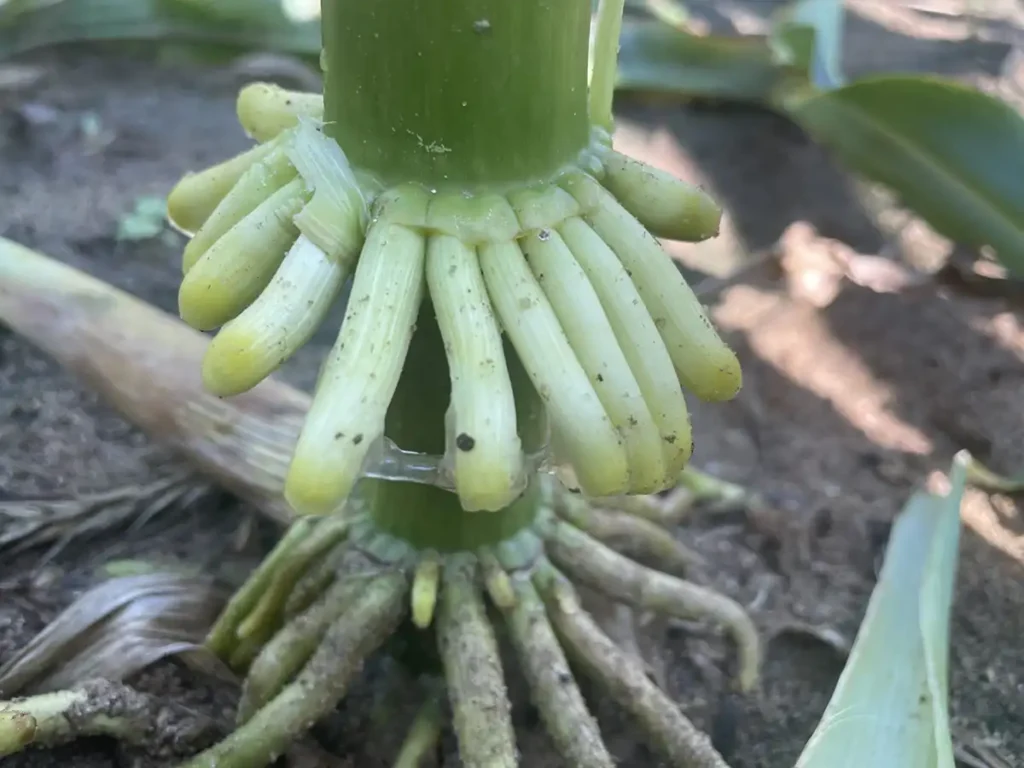
Nitrogen-Fixing Corn Hybrids in the U.S.
The million (perhaps even billion) dollar question is whether the weather in U.S. corn-producing states can support future hybrids that can produce and maintain sufficient mucilage to fix significant amounts of nitrogen. So far, it looks like the answer is yes.
“You need regular rainfall to spur mucilage production,” Ané reports. “But even a shower of 5 to 10 minutes is enough. The gel is secreted within 30 minutes of rain and stays for two or three days with good humidity. We’ve found the average frequency of rain is sufficient in the corn belt, in Georgia, Wisconsin and Florida. Twice a week is really good, but we are getting once a week here in Wisconsin and we are getting good gel production.”
The team is also looking at what extent humidity affects the number of nodes that have aerial roots and the thickness of these roots, both of which means more gel and more N fixation.
Evaluating Yield Impact of Nitrogen-Fixing Traits
Another critical question is whether there is a yield cost to the trait of aerial root production. The team published modelling data last year showing it’s likely 4-11% of a plant’s energy, and at 4%, there is no impact on yield.
“But even if there is a yield hit and you lower nitrogen fertilizer input costs by even 10%, you will still come out ahead,” Wallace notes. “Of course, we need lots of field trial data to find out. This summer, we are comparing hybrid crosses of the Mexican landraces with U.S. Midwest-adapted varieties to siblings without the trait and we will have our first dataset on the yield cost of the trait, if any.”
The U.S.-adapted varieties with which the team is crossing the Mexican landraces are available in the public domain. They were cutting-edge commercial hybrids 20 years ago. De Leon’s expertise is being harnessed for tasks such as deciding which of these modern hybrids make the most sense to introgress — to integrate transfer of the aerial root trait without losing the positive traits of modern cultivars, thereby avoiding ‘linkage drag.’
“Jean-Michel has already done some evaluation of this, and I am helping him with a more systematic and larger evaluation,” de Leon explains. “We are mostly using inbred lines and doing visual selection of the progeny in terms of more roots and thicker roots. So, we have some plots focussed on how traits of Mexican landraces and modern lines integrate, some plots just looking at the trait of aerial root production, and other plots looking at several other things. We have about two acres here and another acre of plots at another UW research station in another region where they can simulate rain with overhead irrigation.”
Wallace notes that at this point, while the project is at the genetics stage and not yet the breeding stage. “Once we know how the hybrid crosses behave this summer, we can start building breeding models. And once more is known about the genes, we can identify markers and use AI-assisted breeding and avoid linkage drag by editing out the ‘bad’ genes of the landrace.”
That includes a very tall height (propensity to lodge) and a maturation of eight months.
De Leon notes that how the aerial root genes work seems to be fairly simple, but even if there are several genes and their mechanism is complicated, that will not stop breeding progress.
“The gene editing revolution is continuing to unfold,” she says. “The biggest limitation is not with the technology but with public the acceptance and also having the resources. It is fantastic that we have the Wisconsin Crop Innovation Center here, which is dedicated to using gene editing with many crops. The opportunities are very real.”
Patience and Time
“We need to take our time and manage expectations,” Ané adds. “Expectations are very high. We have to be careful what we claim. Nitrogen fixation is tricky to determine accurately and there are several methods to do it, all of them with pitfalls. There is excitement, there is investment, but we have to be careful not to oversell. We need good science and good data to back up our claims. So, everyone must be patient. Whatever we provide to growers must be reliable.”
And as de Leon explains, aerial root production only occurs when the plant is large enough.
“We can get the plant quickly to that stage with fertilizer or we can do that in another way,” he says.
Ané says that along with nitrogen-fixing plants, they’re also going to nitrogen-fixing soil bacteria if they are going to significantly reduce the need for nitrogen fertilizer. These bacteria are similar to those found in the root nodules of legumes.
“It’s not just a plant or microbe solution,” he says. “As we progress through pre-breeding, the development of N-fixing bacteria products are making steady progress. Pivot Bio in California, for example, sells genetically modified [legume-nodule sourced] bacteria as a seed coating that converts a significant amount of soil and air nitrogen to a plant-available form for crop absorption, reducing the need for fertilizer.”
Pivot Bio has worked with 22 universities to independently evaluate its products, which in 2023 were applied to corn and small grain seeds planted on about five million acres in the U.S.
Harnessing Endophyte Bacteria
At the same time, systemic endophyte bacteria are being tested for benefits to crop plants by California-based IntrinsyxBio, based on the work of Sharon Doty of University of Washington. Doty follows in the footsteps of Johanna Dobereiner, who did pioneering work in Brazil in the 1990s showing that symbiotic bacteria fix nitrogen within the sugarcane plant.
“It’s been very difficult to break the dogma that nitrogen fixation only happens in legume root nodules,” Doty says. “I’ve been working on this since 2001. I first proved that black cottonwood can grow on nothing but rock and sand, through symbiotic nitrogen-fixing bacteria. There are lots of symbiotic bacteria that fix nitrogen in plants and trees, in grasses and monocots and conifers, which are all groups that diverged millions of years ago. This is an ancient relationship.”
IntrinsyxBio purchased the licence to bring these developments to commercialization the from University of Washington. They have already field-tested a few strains in tomatoes, strawberries, wheat and rice and barley in California and Europe. Doty notes that these bacteria can be delivered to the seed at planting through a bead that contains a bacterial culture, entering the plant through natural cracks in lateral roots. They can also be sprayed on leaves and enter a crop plant through the stomata.
“The plants recognize that they are part of the plant microbiome and let them in,” Doty explains. “Our data shows that N fixation is amplified in microbial communities, and so it will need to be communities that are added to plants. We are also seeing that these endophytic bacteria make plants more resilient to drought stress, with their survival in some cases depending on the presence of these endophytes. It’s a very exciting time, as these microbes are stable, long-lasting and cheaper than N fertilizers and do not have the emissions and leaching issues.”
Editor’s note:
The pursuit of naturally nitrogen-fixing crops represents a promising frontier in our industry that holds the potential to reduce dependency on synthetic fertilizers. By harnessing the natural symbiotic relationships between plants and bacteria, scientists are paving the way for more sustainable practices. The innovative work led by Jean-Michel Ané and his colleagues offers hope for improving crop resilience and yield, particularly in regions where access to fertilizers is limited. As this research progresses, it will be crucial to maintain a balanced perspective, ensuring that scientific advancements are met with careful evaluation and public acceptance. With continued investment in research and technology, the dream of widespread nitrogen-fixing crops could become a reality.


